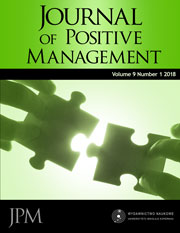A PRACTICAL APPLIANCE OF THE 5S METHOD IN THE WORK ORGANIZATION OF THE MANUFACTURING COMPANY
DOI:
https://doi.org/10.12775/JPM.2018.135Keywords
Lean Management, 5S, work organizationAbstract
Purpose: The aim of this paper is to present the theoretical aspects of the 5S method, its constituent elements, as well as the possibilities of its practical use in a production enterprise. In addition presenting problems and limitations in the implementation of the 5S method in the company.
Methodology: The used research approach was the analysis of Lean Management literature and case study based on information from lean managers and implementation documents of the manufacturing company.
Originality/value: The paper can provide value for people involved in Lean Management, emphasizing the theoretical aspects of the 5S method and its practical appliance. This paper can provide value for leaders who want to improve work organization and are not involved in Lean Management or for managers of smaller companies operating in the cable industry.
References
Al-Aomar, R.A. (2011), “Applying 5S Lean Technology: An Infrastructure for Continuous Process Improvement”, International Journal of Mechanical, Aerospace, Industrial, Mechatronic and Manufacturing Engineering, Vol. 5 No. 12, pp. 2645-2650.
Fabrizio, T., Tapping, D. (2006), 5S for the Office: Organizing the Workplace to Eliminate Waste, Productivity Press.
Fast, L. (2016), “How to Create a Culture to Sustain 5S”, available at: http://www.industryweek.com/how-create-culture-sustain-5s (accessed 29 May 2018).
Filip, F.C., Marascu-Klein, V. (2015), „The 5S lean method as a tool of industrial management Performances”, Modern Technologies in Industrial Engineering (ModTech2015), IOP Conference Series: Materials Science and Engineering, Vol. 95. DOI: 10.1088/1757-899X/95/1/012127
Horbal, R., Kagan, R., Koch, T., Sobczyk T. (2011), „Minione 10 lat ruchu Lean w Polsce. Wnioski i perspektywy”, available at: https://lean.org.pl/minione-10-lat-ruchu-lean-w-polsce-wnioski-i-perspektywy/4/ (accessed 29 May 2018).
Jacaa, C., Vilesa, E., Paipa-Galeanob, L., Santosa, J., Mateo, R. (2014), “Learning 5S principles from Japanese best practitioners: case studies of five manufacturing companies”, International Journal of Production Research, Vol. 52 No. 15, pp. 4574-4586.
Jadhav, J.R., Mantha, S.S., Rane, S.B. (2014), “Exploring barriers in lean implementation”, International Journal of Lean Six Sigma, Vol. 5 No. 2, pp. 122-148. DOI: 10.1108/IJLSS-12-2012-0014
Martínez-Jurado, P.J., Moyano-Fuentes, J. (2014), “Lean Management, Supply Chain Management and Sustainability: A Literature Review”, Journal of Cleaner Production, No. 85, pp. 134-150.
Rebeiz, K.S. (2011), “An Insider Perspective on Implementing the Harvard Case Study Method in Business Teaching”, US-China Education Review, Vol. 1 No. 5, pp. 591-601.
Shaikh, S., Bhoira, M., Ansar, M.A., Dhange, A., Inamdar, Z. (2017), “Implementation of 5S in an industrial inventory store”, Project Report, AIKTC, available at: http://www.aiktcdspace.org:8080/jspui/bitstream/123456789/2015/1/aiktcDspace2015.1.pdf (accessed 29 May 2018).
Tapping, D. (2007), The New Lean Pocket Guide, MCS Media.
Womack, J.P, Jones, D.T., Ross, D. (2007), The Machine that Changed the World, FreePress, New York.
Womack, J.P., Jones, D.T. (2003), Lean thinking, FreePress, New York.
Downloads
Published
How to Cite
Issue
Section
License
Copyright
Articles submitted to the journal should not have been published before in their current or substantially similar form, or be under consideration for publication with another journal. Authors submitting articles for publication warrant that the work is not an infringement of any existing copyright and will indemnify the publisher against any breach of such warranty. For ease of dissemination and to ensure proper policing of use, papers and contributions become the legal copyright of the publisher unless otherwise agreed.
Plagiarism and ghostwriting
In response to the issue of plagiarism and ghostwriting the editors of the Journal of Positive Management has introduced the following rules to counteract these phenomena:
1. Contributors should be aware of their responsibility for a content of manuscripts.
2. Collective authors are obliged to reveal the contribution and an affiliation of each author (i.e. who is an author of specified part of a paper).
3. Any act of dishonesty will be denounced, the editors will inform appropriate institutions about the situation and give evidence of all cases of misconduct and unethical behaviour.
4. The editors may ask contributors for financial disclosure (i.e. contribution of specified institutions).
Stats
Number of views and downloads: 1562
Number of citations: 0



